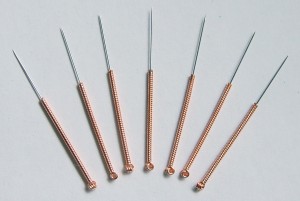 IMS, or dry needling is a therapeutic treatment that targets tight, sore, and injured muscles. The goal of IMS is to release tight muscles in order to relieve nerve irritation and restore range of motion.
IMS, or dry needling is a therapeutic treatment that targets tight, sore, and injured muscles. The goal of IMS is to release tight muscles in order to relieve nerve irritation and restore range of motion.
A Physiotherapist will insert thin needles into a tight muscle while changing the needles depth and direction. This motion will cause that muscle to “twitch”. The “twitch” is caused by a quick contraction of the muscle. This grasping feeling will then in turn become a feeling of release as the tightened and short muscle relaxes: the needle is then removed. (A needle placed in a normal healthy muscle would cause no response and no pain).
The experience of an IMS treatment greatly varies from person to person. The response can be anywhere from uncomfortable to quite painful; but it’s temporary. The level of discomfort is directly related to the level of nerve dysfunction, and the discomfort will decrease as the nerve returns to normal function. It is not the needle causing the pain, but the muscle’s response to the needling that is causing the pain.
There are a number of changes that take place when the needle is inserted into a muscle. First, the stretch receptor in the muscle is stimulated, producing a reflex relaxation (lengthening). Second, the tiny “injury” created by the needle draws blood to the area, initiating the natural healing process. Thirdly, inserting the needle also creates what’s called an “electric potential” which acts like a reset switch to make the nerve function normally again.
IMS is helpful for the following conditions:
- Neck pain
- Back pain
- Sciatica
- Whiplash
- Shoulder pain
- Tennis Elbow
- Muscle sprains
- Runners Knee
- Plantar Fasciitis
The longer you have had your symptoms, the more treatments that are usually required. It can take 3-4 sessions to notice prolonged improvements in symptoms, though improvements are often found after the first session. On average, 4-8 sessions are required.
For more information on IMS/ dry needling, please contact our physiotherapists.


